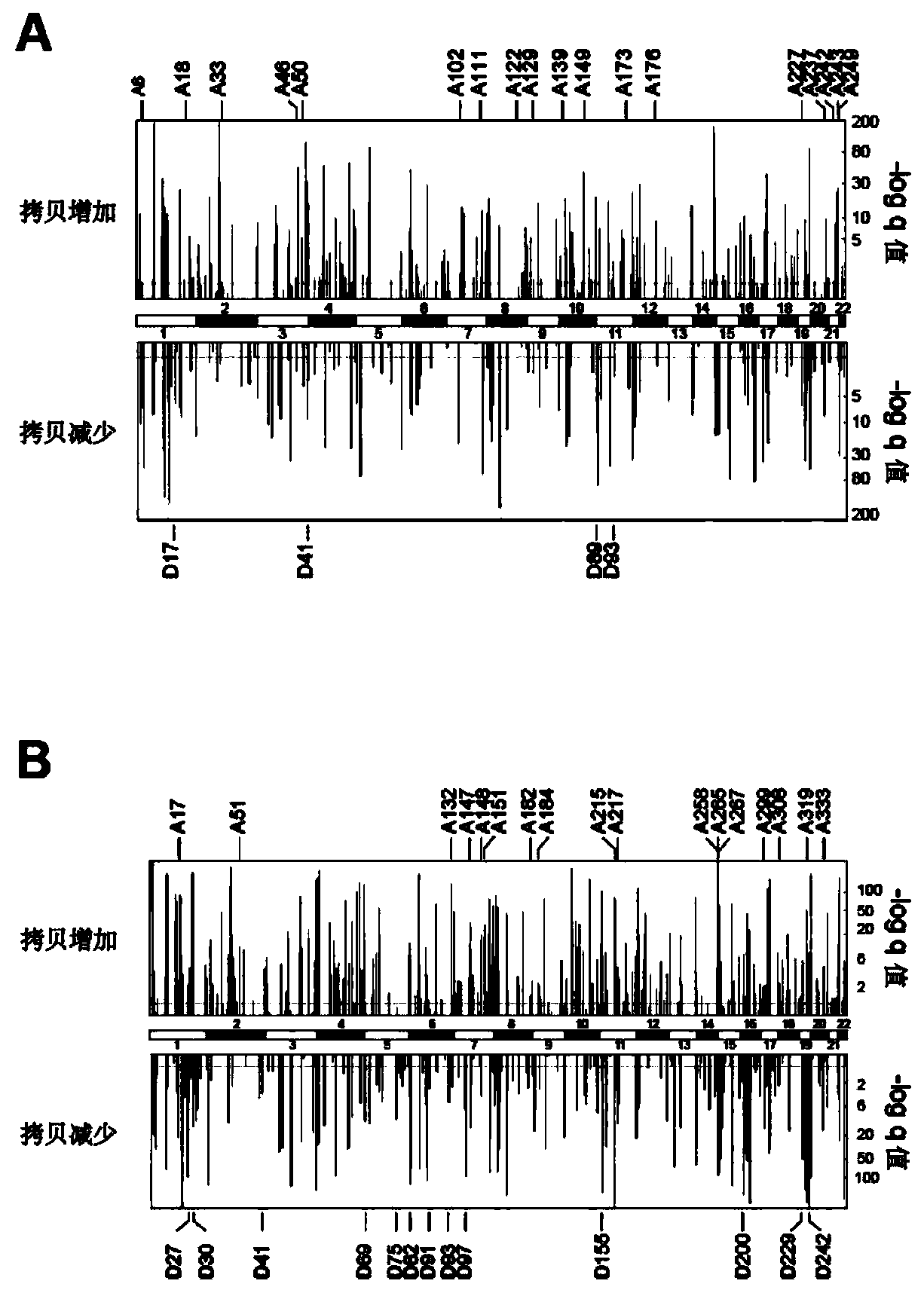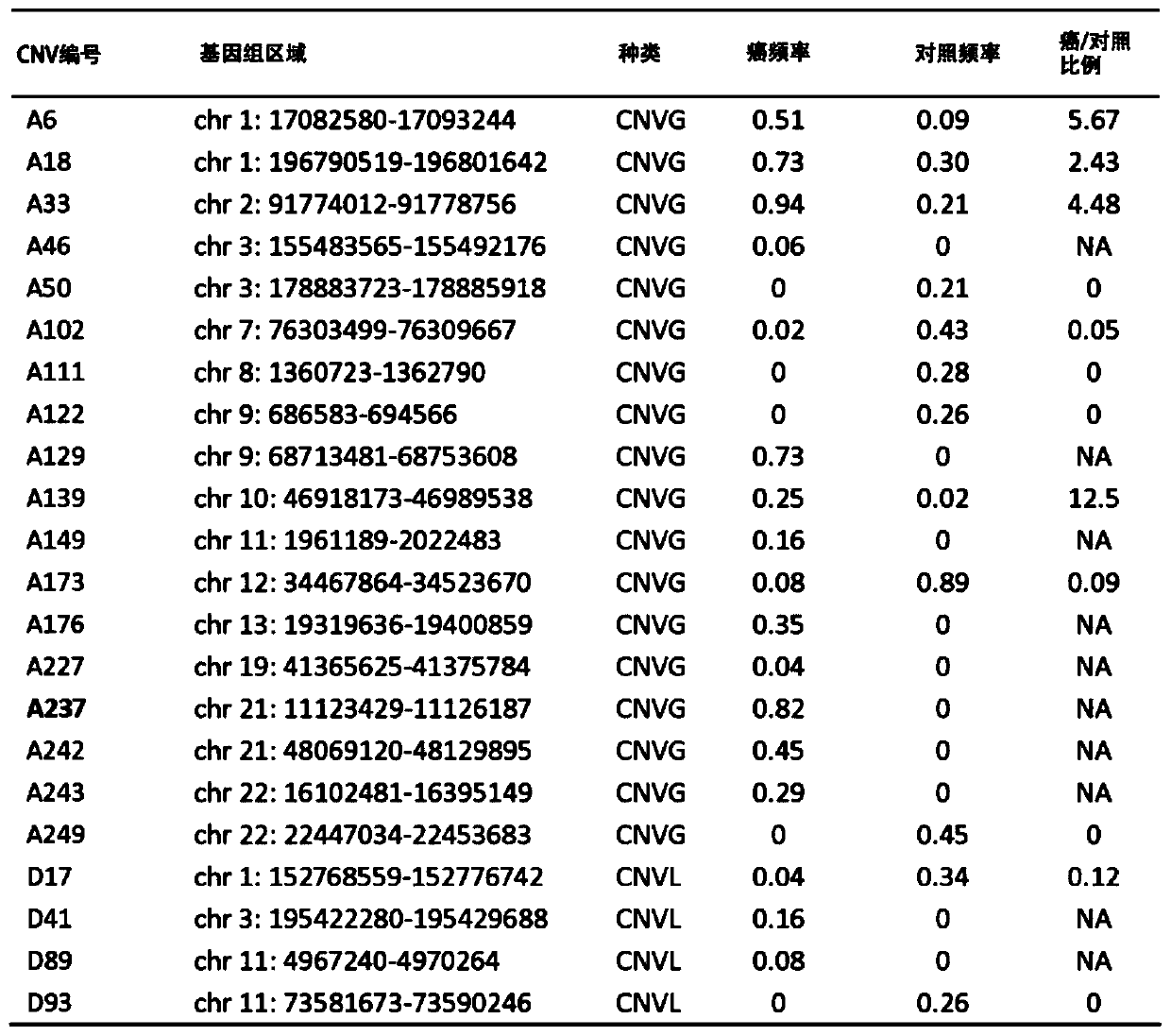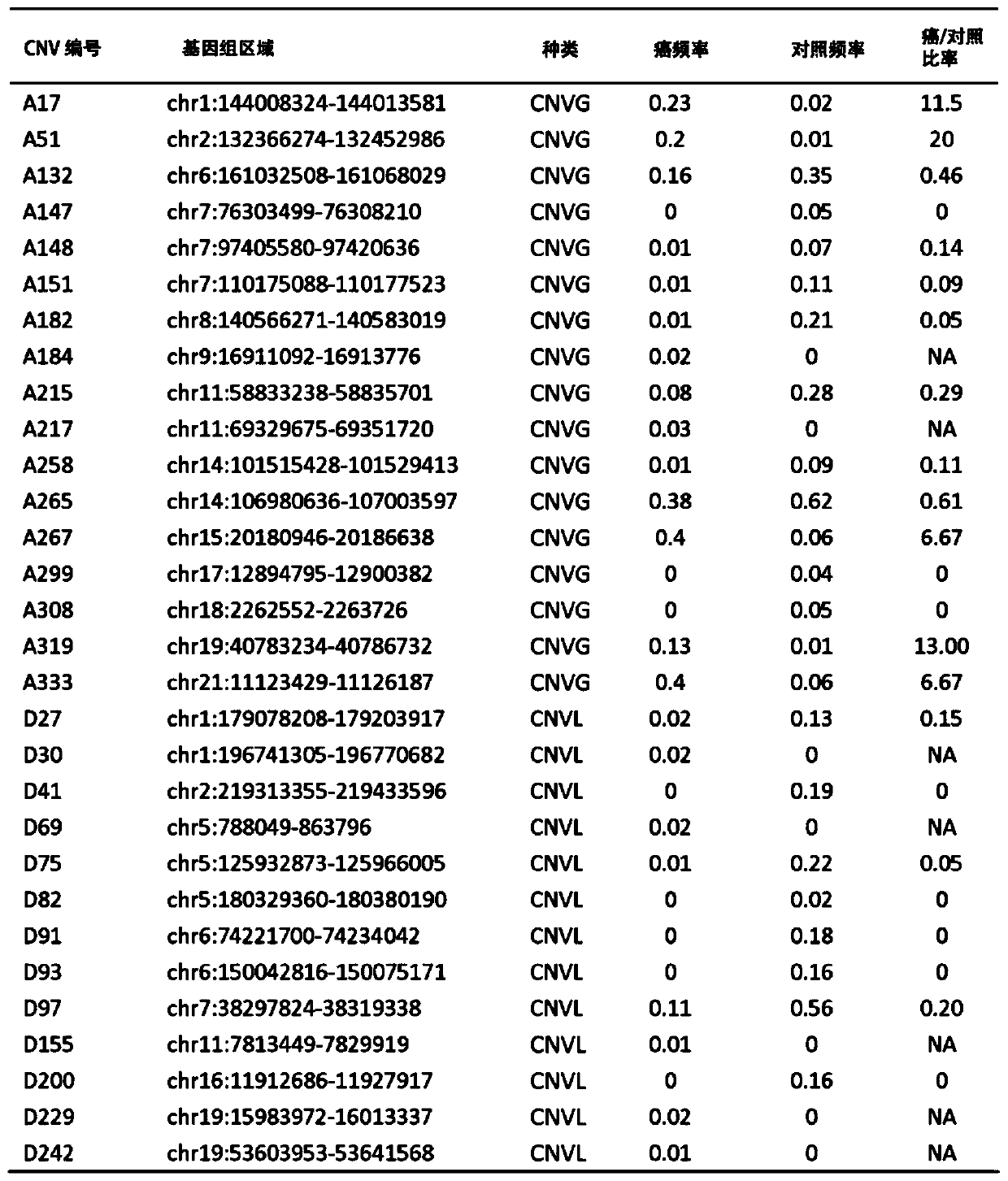Common copy number variations in the human genome for risk assessment of cancer susceptibility
A technology of copy number variation and genome, applied in the fields of genomics, proteomics, instruments, etc.
- Summary
- Abstract
- Description
- Claims
- Application Information
AI Technical Summary
Problems solved by technology
Method used
Image
Examples
Embodiment Construction
[0035] On the premise of not departing from the disclosed spirit of the present invention, various replacements and modifications made to the scope of the technical field of the present invention are included in the scope of the present invention.
[0036] the term:
[0037] The term "a" used in the specification means one or more. As for "a" in the claims, it means one or more than one, while "another" as used herein means at least a second or more.
[0038] The term "copy number variation", or CNV, refers to a variation in the copy number of autosomal and female X-chromosomal DNAs of the human genome, normally two copies (ie, "diploid"). If more or less than two copies of a DNA segment are present, it becomes a CNV. In males, there is only one copy of both the X and Y chromosome DNAs (ie, "haploid"), so a DNA fragment with more or less than one copy becomes a CNV. More than the standard copy number is copy gain. Conversely, less than the standard copy number is copy redu...
PUM
 Login to View More
Login to View More Abstract
Description
Claims
Application Information
 Login to View More
Login to View More - R&D
- Intellectual Property
- Life Sciences
- Materials
- Tech Scout
- Unparalleled Data Quality
- Higher Quality Content
- 60% Fewer Hallucinations
Browse by: Latest US Patents, China's latest patents, Technical Efficacy Thesaurus, Application Domain, Technology Topic, Popular Technical Reports.
© 2025 PatSnap. All rights reserved.Legal|Privacy policy|Modern Slavery Act Transparency Statement|Sitemap|About US| Contact US: help@patsnap.com



